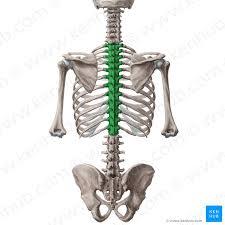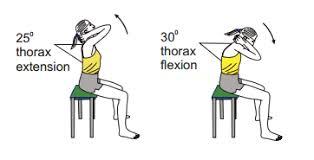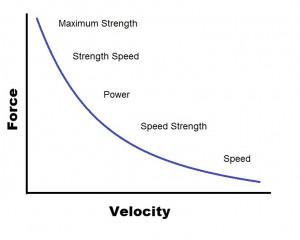Alex Amin (2022) - 9 mph Jump In Mound Velocity
- Thundercat Sports Academy
- Jun 1, 2019
- 9 min read
Alex Amin (2022) was a player that came to us weighing 161lbs and 6’ 1” tall, with an original pull down velocity of 68.1 MPH with a 5 oz ball. Alex’s goal was to improve all aspects of throwing, both on the mound and as a position player. We were given 16 weeks to train before the beginning of High school baseball, following his soccer season in the fall. Our staff created a training plan that would be dominated early by improvement of strength and throwing specific mobility, which would then transition into a, throwing on-ramping phase, leading into the beginning of the high school season. After 16 weeks Alex left us weighing 170lbs, a near 10lb increase as well as a PR (Personal Record) pull down of 80.9 MPH which equates to an unbelievable increase of 12.8 MPH. The rest of this post will discuss some of the training that Alex performed over his offseason, as well as give a glimpse into what a typical offseason for a TCAT trainee is like.

Mobility
The term mobility and flexibility are often used interchangeably, even though they are quite different. Flexibility: The passive ability of a specified musculotendon group to move about a Range of Motion (ROM). Where as Mobility: The active ability to move musculotendon group to move about a Range of Motion. An example to better explain these concepts would be the difference between bending at the waist in an attempt to touch ones toes (flexibility) or while standing on one leg, attempting to lift the other leg as high in front of yourself as possible (mobility). Both movements involve the same group of musculature however they provide very different movement results.
Now that terms have been clearly defined we can dive further into two specific mobilities; Thoracic spine, and hip mobility. These mobilities are important for all athletes but especially for rotational athletes such as baseball and softball which rely on proper sequencing of the kinetic chain.
Thoracic Spine
For our purposes we will say that the Thoracic Spine (Tspine) runs from the top of the shoulders to the bottom of the rib cage. This area demands high amounts of flexion, extension, and rotation.
During a pitchers delivery they must work through all these ranges of motion both individually and simultaneously. Below are examples of pitchers being in extension and rotation as well as rotation and flexion respectively.
Extension/Rotation Flexion/Rotation
Lacking in any of these qualities can prevent maximal velocity regardless of strength, proper T-Spine mobility is also highly correlated to arm health.
A few sample mobilities are provided below.
Hip Complex
The hip complex is one of the most complicated structures in the body and provides numerous functions. For the context of this article we will be focusing on Internal and External Rotation of the hip.

External Rotation
Is one of the most common areas lacking in athletes of all ages. Proper External Rotation (ER) allows the athletes to hold their center of gravity over their rear leg longer which contributes to increasing velocity via creating hip to shoulder separation which will be covered later on. As we see in the image below Chapman is holding onto ER of the hip which is shown by his knee pointing the opposite direction that his weight is going. As well as the creases in his pants of the rear hip. This will allow him to hold his center of mass back until just prior to foot strike, at which point internal rotation will begin.

Internal Rotation
Internal Rotation (IR) of the hip is what begins rotation of the pelvis, initiating the start of the throwing motion. Proper IR is required to allow maximum forward rotation until release of the ball. As we see in
the picture below internal rotation has begun which is signified by the rear knee pointing down to the ground as well as the rear hip beginning to extend. If we look again at the pants, we can see that the creases near the hip are beginning to flatten out.

Sample Hip Mobilities
Cuff Timing
Although cuff timing is not directly linked to mobility it fits nicely into this section. Cuff timing can be thought of as how the main muscles of the shoulder girdle interact with each other. A simple example of this would be how the upper trap, lower trap and serratus anterior interact. Muscles can only create pull not push. It is important that all the muscles involved create the right amount of tension at the correct position in the movement. The serratus anterior helps to pull the bottom of the shoulder blade into the arm pit which allows the arm to get overhead. If this muscle is weak it can limit overhead mobility, which will cause a compensation of other muscles in the long run. Drastic compensations that are present for long periods of time are a major cause of injuries.

Sample Exercise
These two exercises are great for improvement of cuff timing because they force the athlete to focus on the movement of the scapula in a controlled setting, which eliminates unnecessary external factors that are present during throwing such as, lower body mechanics or throwing strikes.
Application
During Alex’s initial assessment we saw that he lacked external rotation, had protracted shoulders which means they are pulled unnecessarily forward at resting posture, as well as a lack of Tspine extension. We used a few of the exercises discussed above to help correct his deficiency’s which allowed him to develop strength in deeper ranges of motion as well as allowing for reduced stress on structures that were previously immobile.
Terminology
Strength: The ability to exert force on an object over no specific period of time.
Power: The ability to exert force on an object under a time constraint.
Plane of Movement: Human movement is separated into three specific planes; Frontal, Sagittal and Transverse.
We can think of the biggest difference between strength and power; power is limited by how much time we have to complete a desired action where strength is not. This means that power has more direct application to a sport setting, because sport is always under a time constraint, such as hitting a thrown ball. This does not mean that building strength is useless, the human body is a complex system, it requires many factors to work in unison to function at its highest capacity. Strength is actually a pre-requisite to power, meaning more strength allows for higher levels of power to be expressed. However, it is important to understand that strength and power are quite specific to the plane of movement. The Frontal plane can be thought of as side to side movement, whereas the Sagittal plane is front to back such as walking, and the Transverse plane is rotational. The two main aspects of baseball, hitting and pitching, occur in both the frontal and transverse plan simultaneously.
Strength
In youth and high school athletes strength is the number one limiting factor when it comes to performance. Often times people look at the skill of sport i.e. (Throwing) and strength to be unrelated, however, the human body is much smarter than we realize and will self limit movement to prevent possible injury. This means if an athlete does not posess enough strength, the body wont even allow the athlete to move into a desired position. A good example of this would be the example from earlier of Chapman. He has an enormous amount of hip strength in combination with the proper mobility to hold deep external rotation of the hip.
To improve strength in all athletes we use Compound Movements such as the Dead lift, Squat and Press.
https://www.youtube.com/watch?v=EUjh50tLlBo start at 00:25
These are just three basic exercises that will help build foundational strength for all athletic movement. However, these do not alone have the specificity we need in baseball to improve throwing so we supplement these main exercises with accessory movements that match the demands of baseball.
Here are some examples of exercises we use to build lateral strength and rotational power that translate directly to the skill of throwing.
https://www.youtube.com/watch?v=B_3ObE3rknA start at 00:25
Application
During the assessment period we saw that Alex lacked general strength as well as severely lacked rotational power. We spent a majority of his time just improving his strength on compound moments because they will be the long term foundation in his training and then shifted our focus to plane specific movement in the last few weeks before the season. Although his numbers on squat and deadlift are nothing impressive only being in the 200s, it is important to remember that long term development is the goal, training is about continually progressing over time, when he returns to training with us in the fall he will have a relatively similar training program created for him to continue improving on his overall strength.
Throwing Program
The best throwing programs are ones that are incorporated into complete training program, and not just performed on their own. Each athlete only has a certain amount of training economy that they can expend. Training Economy can be thought of by using the analogy of a dollar. Each athlete only has 100 cents of energy to spend. All aspects of life can take away from their energy they are able to expend; stress, lack of sleep, personal relationships as well as intense training all take from this economy. By proper management of these different stressors we can chose the correct volume and intensity to devote to the skill of throwing. During the early off season about 60 – 70% of Alex’s economy was devoted to lifting and mobility as discussed earlier, so his throwing volume must be kept low or he will experience over training which can lead to injury. Later on as the season drew closer, the economy demand of the weight room is decreased and focus on throwing is increased.
Re-Patterning
Throwing a baseball is one of the most complex movements in sport. It requires a combination of rhythm and correct timing of force application. The most common way to refer to the arm action of a player is called the arm spiral.
The image provided below shows that throwing a ball is much like a spiral staircase. It is about creating a slow constant flow of energy that is released once the arm is in the proper position to be accelerated forward. In Alex’s case he would try to force speed of the arm early resulting in the arm being in the incorrect position during the acceleration phase.

During the early heavy lifting phase we used this time to focus on low intensity throwing drills to help change his arm action but wouldn’t require a high energy demand.
The pivot pickoff is one of the most effective way to allow a player to feel the flow of energy and proper timing. By having the player set up with their stride leg in back and keeping their feel anchored to the ground the player then performs a throwing action as normal. By removing the lower half it allows direct focus on thoracic rotation as well as horizontal abduction of the shoulder.
Step back throws are also great because they teach the player how to load the rear hip and produce force in the desired direction
Turn throw variations also play a big role in teaching scapular loading through passive means rather than actively retracting the shoulder which can cause sequencing issues
Develop Intent
When working with players of all ages often times the understanding of how to try and throw hard is just not there. This is likely due to the desire of youth coaches and parents for kids to perform well in games without with out understanding the big picture.
The speed-accuracy trade-off: In the study of motor learning it is understood that a speed accuracy trade of exists, and different skills fall on various places in the spectrum. For example, opening a locked door with a key requires slow movement with a high degree of accuracy. However most coaches assume this would apply to pitching, they want players to slow their body down in an attempt to be more accurate. Unfortunately, the sacrifice of velocity for strikes is detrimental to long term development. Throwing a baseball in a specific zone is challenging for anyone, let alone a 9 year old boy who is physically undeveloped. The skill of pitching at a young age can actually reduce a players ability to build the intent to throw hard. Pre puberty is the ideal period to develop intent because most children are much more neurologically plastic than teens and adults. By allowing intent to develop at a young age we can then focus on the skill of pitching post puberty because the player will already have a high understanding of intent.
There are a verity of ways to help players develop intent; we mainly use Driveline Plyocare balls which come in both over and underweight compared to a baseball, as well as run n’ gun throwing drills. By throwing balls that are over weighted it forces the athlete to produce more force when throwing, inversely when using the underload balls it allows the player to feel what its like to create large amounts of arm speed that will subsequently increase velocity. The run n’ gun is also a great tool to use, the drill consists of an athlete having a 20 yard build up jog before shuffling and throwing the ball. This drill forces the athlete to understand not only how to produce high amounts of force but also dissipate force.
Conclusion
Developing velocity is one of the most challenging yet rewarding journeys to undertake. Velocity improvement is no-linear, meaning that it can fluctuate up and down and doesn’t directly increase with increased weight room numbers. The true key to developing velocity is through a comprehensive plan that is executed with consistency. We will say it again, the key to developing velocity is through CONSISTENCY of training. Change takes time and the time to improve mobility, strength and throwing mechanics isn’t always sexy. Its about showing up and taking the small menial things with the upmost importance.












Comments